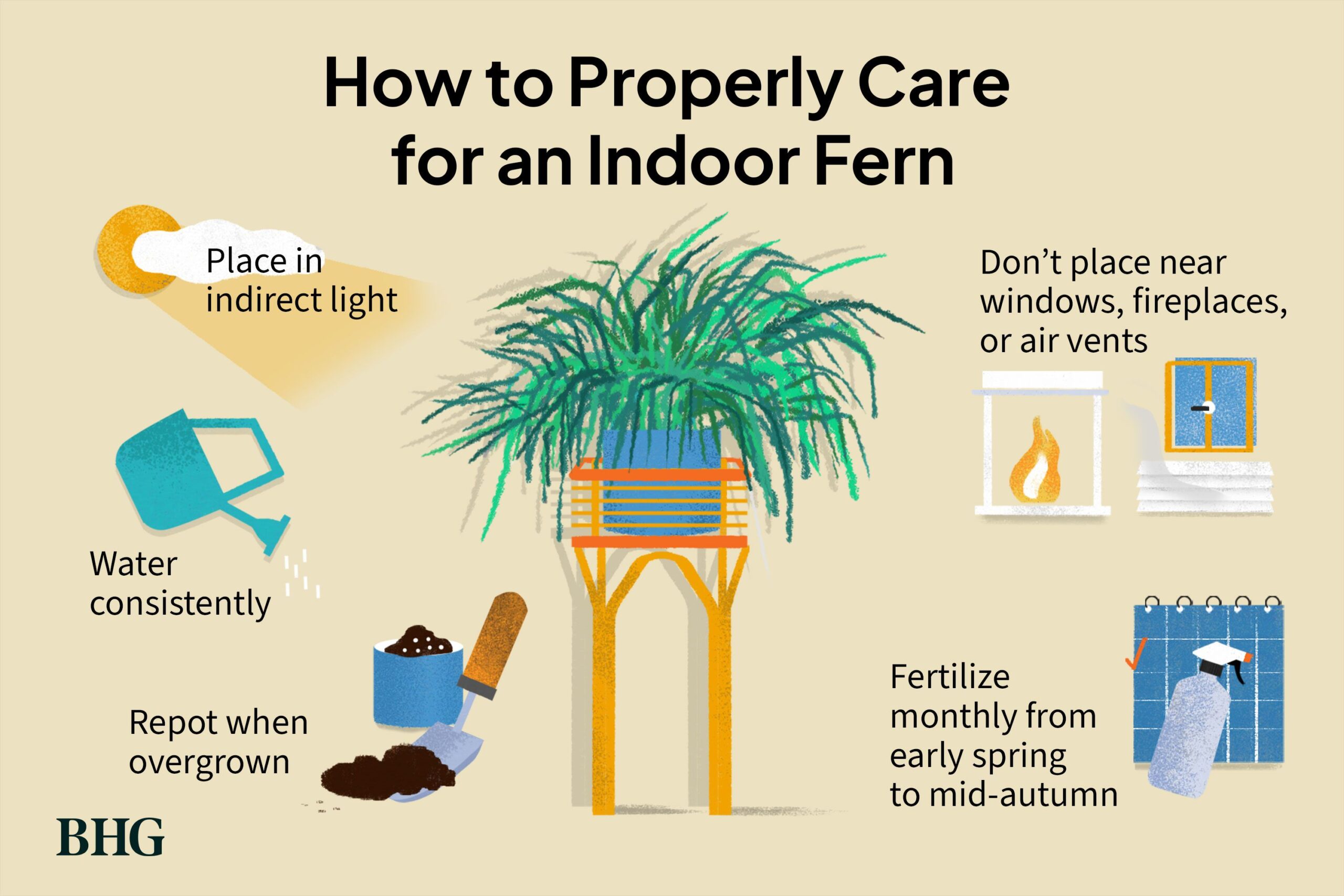Best Way to Care for Ferns Indoors
Ferns are a popular choice for indoor plants due to their lush green foliage and air-purifying properties. Whether you’re a seasoned plant parent or just starting your indoor garden journey, caring for ferns can be a rewarding experience. In this article, we’ll discuss the best way to care for ferns indoors to ensure they thrive and stay healthy.
Light
Light is essential for ferns to grow properly indoors. Most ferns prefer indirect light or filtered sunlight. Avoid placing your fern in direct sunlight as it can scorch the delicate fronds. If you notice your fern’s leaves turning yellow or brown, it may be getting too much sun. Place your fern near a window that receives bright, indirect light for best results.
Watering
Proper watering is crucial for the health of your fern. Ferns like to be kept consistently moist but not waterlogged. Water your fern when the top inch of soil feels dry to the touch. Be sure to use room temperature water to avoid shocking the plant. If your fern’s leaves start to droop, it may be a sign that it needs more water. On the other hand, yellowing leaves can indicate overwatering.
Humidity
Ferns thrive in high humidity levels, which can be a challenge to maintain indoors. To increase the humidity around your fern, you can mist the leaves regularly or place a pebble tray filled with water near the plant. Another option is to use a humidifier to keep the air moist. If the air in your home is particularly dry, consider grouping your fern with other plants to create a microclimate of higher humidity.
- Ferns prefer a humid environment
- Mist the leaves regularly
- Use a humidifier
- Create a humid microclimate with other plants
Temperature
Ferns do well in temperatures ranging from 60 to 75 degrees Fahrenheit. Avoid placing your fern in drafty areas or near heating or cooling vents, as extreme temperature fluctuations can stress the plant. If your home is particularly dry or hot, consider placing your fern in a bathroom or kitchen, where the humidity levels are naturally higher.
Soil
Well-draining soil is essential for ferns to prevent waterlogging, which can lead to root rot. Use a potting mix designed specifically for ferns or mix equal parts peat moss, perlite, and compost to create a well-aerated soil mix. Repot your fern every 1-2 years to refresh the soil and provide the plant with fresh nutrients.
Fertilizing
During the growing season (spring and summer), you can fertilize your fern once a month with a balanced liquid fertilizer. Be sure to dilute the fertilizer to half strength to avoid overfeeding your fern. In the fall and winter, you can reduce the frequency of fertilizing to every 2-3 months, as the plant’s growth slows down during this time.
Pruning
Regular pruning is essential to keep your fern looking its best. Remove any yellowing or dead fronds to promote new growth and prevent the spread of diseases. Use clean, sharp scissors to make clean cuts and avoid tearing the fronds. Pruning can also help your fern maintain its compact shape and prevent it from becoming leggy.
Pests and Diseases
Inspect your fern regularly for pests like mealybugs, scale, or spider mites. If you notice any signs of infestation, isolate the plant and treat it with an insecticidal soap or neem oil spray. Be sure to follow the instructions on the product label and repeat the treatment as necessary to eliminate the pests. Additionally, keep an eye out for fungal diseases like root rot, which can be caused by overwatering or poor drainage.
Conclusion
Caring for ferns indoors can be a rewarding experience with the right care and attention. By providing your fern with the proper light, water, humidity, temperature, soil, and care, you can enjoy a healthy and thriving plant in your home. Remember to inspect your fern regularly for pests and diseases and take prompt action to prevent any issues from spreading. With a little TLC, your fern can bring beauty and greenery to your indoor space for years to come.



